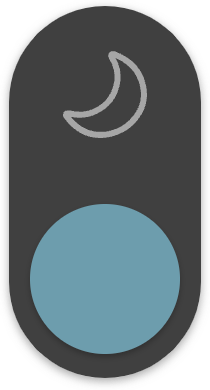
By Grenville Cross
"They now ring the bells, but they will soon wring their hands", said the English statesman, Sir Robert Walpole.
On July 24, 2020, when District Judge Anthony Kwok Kai-on acquitted three alleged rioters, Natalie Lee Yuen-yui, Tong Wai-hung and Elaine To, on a strict interpretation of the offense's legal ingredients, there was rejoicing in some quarters. That a coach and horses had apparently been driven through law enforcement was seen by some as a source of glee, and the result was also trumpeted in anti-China circles in foreign parts. However, the Court of Final Appeal's judgment on Nov 4 will by now have wiped the smiles off their faces.
By way of background, on July 28, 2019, there was an authorized assembly in Chater Garden, Central. Thereafter, some of the protesters, disregarding police warnings, headed towards the Liaison Office of the Central People's Government in the Hong Kong Special Administrative Region in Sai Wan, and a riot erupted, with participants setting up roadblocks near the Western Police Station, and chanting abusively. When the police mobilized, they arrested the three suspects nearby, believing they were, if not actively engaged in the riot, complicit in it. The trio were jointly charged with a riot which took place at Des Voeux Road West, contrary to the Public Order Ordinance (Sect.19), and with an alternative charge of unlawful assembly (Sect.18), a less-serious offense.
At their trial, there was no direct evidence to show that the three accused had actually participated in the offense (DCCC 872/2019). Prosecutors, therefore, relied on circumstantial evidence to demonstrate their involvement. By drawing the necessary inferences, the judge was invited to conclude that they were either present, participating or encouraging other rioters, or else that they were parties to the riot by virtue of the joint enterprise doctrine, and had supported the rioters in other ways.
The circumstantial evidence included their black outfits, their possession of protective gear, which included goggles, gloves, helmets and bottles of saline, and their attempts to escape, often a sign of guilt. Prosecutors argued that, taken cumulatively, these factors fixed them with liability, on the basis that they were secondary parties who were participating in an unlawful enterprise along with the principals, the actual rioters. This is a common law doctrine, and it arises where somebody participates in a joint criminal enterprise during which an offense is committed by the principal, and they are all guilty for having acted together in concert and with a common purpose.
In acquitting the three defendants, Judge Kwok declined to infer that they were physically present during the riot, and ruled that Sections 18 (unlawful assembly) and 19 (riot) of the Public Order Ordinance excluded the joint enterprise doctrine. He considered the offenses had the distinctive feature of "corporate nature", and this required the suspects to "assemble together" when the offense occurred, meaning that secondary parties who were elsewhere were not liable.
As this was the first prosecution for riot arising out of the insurrection in 2019, with many others reportedly in the pipeline, Kwok's ruling created potential problems for prosecutors, and meant that large numbers of suspected rioters might no longer be prosecutable. If people could not be convicted of riot or unlawful assembly unless they were actually involved at the crime scene, it would, it seemed, be hard to hold secondary parties to account, and his ruling was lauded in hostile circles on that account.
On March 25 however, after the secretary for justice invited the Court of Appeal to clarify the position, it ruled that, under the joint enterprise doctrine, people can be prosecuted for either riot or unlawful assembly even if they are not physically present (CASJ 1/2021). Such an approach, it said, served "the public interest of maintaining public order", and it opened the door to the prosecution of other suspected rioters. Just as they had welcomed Judge Kwok's ruling, those who supported the insurrection denounced this judgment, not least because it paved the way for other rioters to be prosecuted.
This, however, was not the end of the story. After the Court of Final Appeal, which, apart from Chief Justice Andrew Cheung Kui-nung, included permanent judges Roberto Ribeiro, Joseph Fok and Johnson Lam Man-hon, as well as the eminent British jurist, Lord (Jonathan) Sumption, a non-permanent judge, was asked by Tong Wai-hung to consider the issues arising, it agreed to do so. It also took on board the appeal of Lo Kin-man, who had been convicted, along with Leung Tin-kei, of involvement in the Mong Kok riots in 2016, and whose case engaged like questions. When judgment was delivered on Nov 4, there was a fresh twist (FACC 6/2021).
The CFA decided that both the unlawful assembly and riot offenses require proof that a suspect actually participated in the disorderly or riotous conduct in common with the other persons assembled, and had a "participatory intent". Proof that the accused persons were executing their plan would suffice to show that they were "taking part" in the offenses and thus establish guilt, and it was not necessary to rely on the joint enterprise doctrine.
Although, said the CFA, mere presence at the scene of an unlawful or riotous assembly does not create criminal liability, if somebody is present and provides encouragement by words, signs or actions, he or she may be held to be "taking part" in the manner contemplated by the offense provisions. They would, therefore, be guilty as either a principal or as an aider and abettor. It would not, moreover, require a "great deal of activity" to turn a "mere presence" at the scene into encouragement of the riot.
At the same time, the CFA stressed that its analysis "does not leave any gap" in law enforcement, and that even people who are not at the scene can still be criminally liable. This is because the criminal law already provides that a person who counsels or procures an offense, while not present, is complicit on the basis of having provided assistance or encouragement prior to its commission. Equally, somebody who conspires with others to commit the offense, or incites others to commit it, does not have to be physically present at the scene when the offense occurs.
Indeed, various legal devices underpin the CFA's reasoning. Whereas incitement to commit an offense, whether riot or otherwise, is prosecutable at common law, a conspiracy to commit an offense, based on a criminal agreement, is actionable under the Crimes Ordinance (Section 159A). The Criminal Procedure Ordinance (Cap.221), moreover, provides that secondary parties who aid and abet, counsel or procure the commission of an offense are prosecutable (Section 89).
What this means, therefore, is that a mastermind who oversees the situation and directs the front-line participants is either prosecutable for incitement or as counselor and procurer of the unlawful assembly or riot. So would be somebody who funds or provides materials for these offenses, or who encourages or promotes either of them on social media. As regards those who provide support to the participants in the vicinity of the crime scene, whether by collecting bricks, petrol bombs or other weapons, or who act as lookouts in the riot area, they may either be taking part as principal offenders or else be liable as aiders and abettors in present at the scene, or, if not present, as counselors or procurers. As for a getaway driver, he would be prosecutable for assisting an offender, contrary to the Criminal Procedure Ordinance (Section 90), which carries up to 10 years' imprisonment.
It is unlikely, therefore, that the Department of Justice will be losing any sleep over the CFA's judgment, as culpable individuals can still be prosecuted. The appeal of Lo Kin-man was dismissed, and what prosecutors will need to do now is to ensure that they frame their charges in a way that particularizes an accused's actual complicity, whether as principal offender, counselor or procurer, aider and abettor, inciter or conspirator. In other words, it is business as usual, although there will need to be some terminological adjustments.
As for those who were so ecstatic over Judge Kwok's original ruling, they will no longer be ringing the bells. Indeed, given the impeccable logic of the CFA's judgment, to which Lord Sumption, known as the cleverest man in Britain, will have significantly contributed, they have finally fallen silent, which is as it should be. There is not, as they had hoped, a lacuna in the criminal law, and culprits will still be held to account, no matter their role. As regards the riot cases in the pipeline, it must now be full steam ahead.
(Source: China Daily)
The author is a senior counsel, law professor and criminal justice analyst, and was previously the director of public prosecutions of the Hong Kong SAR.
The views do not necessarily reflect those of DotDotNews.
Read more articles by Grenville Cross:
Opinion | Legal aid: Reforms promote fairness and benefit taxpayers
Opinion | District council disqualifications: EU meddling hypocritical and shortsighted
Opinion | US ambassador: Maturity required to regain trust
Opinion | National Security: New mechanisms ensure fair trials




















Comment